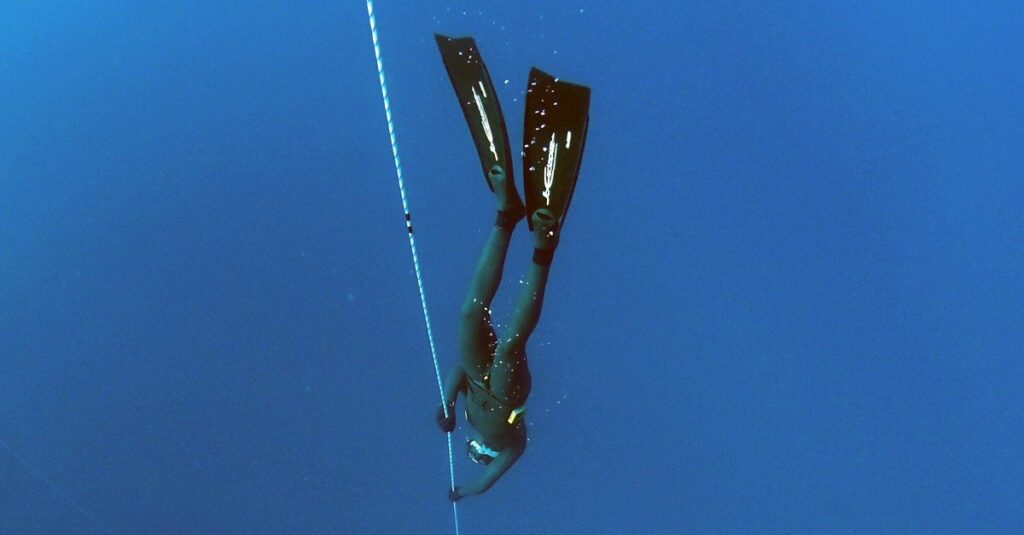

There are several means of sinking during a freedive including weights, weighted belts or sleds and self-propulsion using arms or legs. Below a certain depth, increasing water pressure compresses air spaces in the body and natural buoyancy levels fall enough for gravity to pull a diver down in freefall without further need for weights or effort.
Weights, weighted belts, or weighted sleds are used in some freediving disciplines, while others rely on self-propulsion during descent. Freedivers can choose how to sink depending on whether they are aiming for maximum depth of descent, speed of descent, minimum effort of descent or simple enjoyment of the dive.
The True Story Book of Freediving Champion Audrey Mestre and the Story of Her Death
View on Amazon: The Last Attempt (Opens new tab)


Top rated read
If you’ve ever wondered how freedivers sink, then reading this article is a good place to start answering that question.
Do freedivers use weights?
Every freediver will have a certain amount of natural buoyancy depending on their lung capacity and air intake, body composition (fat is more buoyant than muscle and bone), and clothing (wetsuits add buoyancy).
Sinking below the surface of the water requires enough force to overcome the buoyancy of the freediver. This force can be supplied by physical effort or applying weight to the body. Using the muscles in our arms or legs to descend uses up valuable oxygen, shortening dive time and limiting depth. Weights can enable longer, deeper dives.
Once we are in deeper water there is far more pressure on the body than air at sea level. Pressures experienced by a freediver are doubled for every 10m of depth. The volume of gas in the freediver’s body is compressed in inverse proportion to the pressure experienced and airspaces in the lungs, sinuses and ears can be reduced to a fraction of normal size.
This air compression gradually reduces our buoyancy and we eventually reach a depth where gravity allows us to freefall down through the water without need for further weight or effort. When freefalling, divers should focus on relaxation and equalization of pressure in the ears and other air spaces (e.g. under the diving mask).
It is possible to freedive without weight; although it is more difficult. To learn more about that check out our how to freedive without weights (opens new tab) article.
References
https://www.deeperblue.com/guide-to-freefalling-in-freediving/
https://www.deeperblue.com/weighting-yourself-for-freediving/
